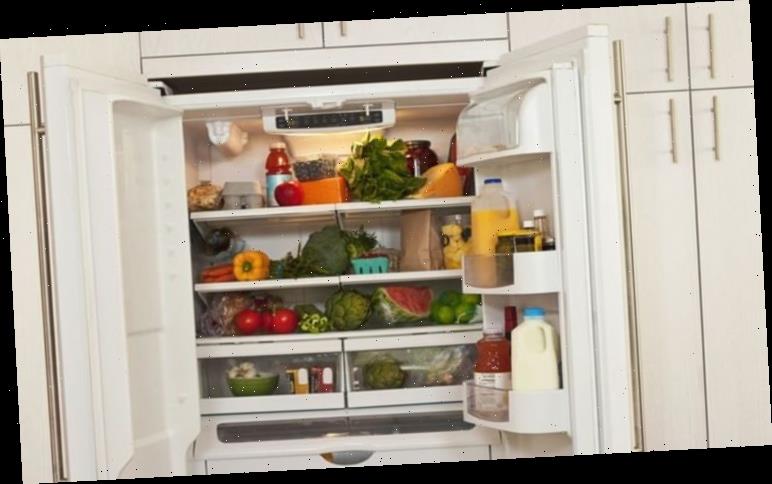Supermarket food: Stefan Gates compares fruit and veg cost
When you subscribe we will use the information you provide to send you these newsletters.Sometimes they’ll include recommendations for other related newsletters or services we offer.Our Privacy Notice explains more about how we use your data, and your rights.You can unsubscribe at any time.
Fridges are an essential part of any home, keeping food fresher for longer. However, research from WRAP has found the UK throws away 6.6 million tonnes of household food waste a year. Of this, nearly three quarters is food we could have eaten.
Many of us are guilty of forgetting about food in the fridge and discovering its sell-by date has come and gone.
However, more often than not poor storage, contamination, and general bad fridge practice are to blame for this epidemic of food waste.
While some may think there is no difference between the shelves, drawers and door when it comes to storing food – you would be wrong.
Below are four key tips when it comes to best organising your fridge.
Read More: How long should you leave your bedding between washes?
1. Raw Meat, Fish and Poultry
You need to store raw meat, fish, and poultry on the bottom shelf of your fridge.
This is to stop them from dripping onto other foods and contaminating them.
Research from Tap Warehouse revealed a staggering two in five (40 percent) of Brits do not store their raw meat, poultry, and fish on this shelf.
Louise Roberts, Director of Food Safety Company, Alimenti, said by not storing raw meat on the bottom shelf “blood and other fluids which may contain high levels of pathogens could drip onto the ready to eat food and contaminate the food with pathogens.”
Ms Roberts explains this is worrying as “if consumed without any further treatment, such as cooking, the ready-to-eat food may cause illness.”
2. Fruit and Vegetables
Any fruit and veg which you need to store in the fridge should be kept in the bottom drawer of your fridge.
DON’T MISS
10 best-selling carpet cleaning products on Amazon for a deep clean [INSIGHT]
Cleaning: Experts share how to clean your bath using a grapefruit [EXPLAINED]
Clean carpet – how to get rid of hair and fluff with one product [ANALYSIS]
Keeping fruit and veg in the bottom drawer keeps them enclosed, and if you keep the original packaging prevents any contamination.
Storing fruit and vegetables in this drawer will also stop moisture from escaping.
Tap Warehouse’s research found a worrying one in eight (12 percent) of people admitted to storing their raw animal protein in the fruit and veg drawer.
This could mean Brits are contaminating their fresh produce with raw meat juice.
3. Ready-to-eat Food
Ready to eat foods include things like leftovers, dairy products and ready meals.
These foods should be kept on the middle and top shelf to prevent any drips from raw foods from contaminating them.
You should also take care to cover or keep these foods in sealed containers to prevent contamination.
Any leftovers should be cooled as quickly as possible, ideally within two hours, before placing them in the fridge and they should be used within two days of refrigerating.
Worryingly Tap Warehouse’s survey found one in eight (12 percent) of Brits admitted to storing their raw meats on the middle shelf.
This can lead to any drips contaminating other foods, potentially causing food poisoning.
4. Fridge Maintenance Tips
Keeping your fridge in working order will not only save you money in the long term, but will stop mounting food costs.
The NHS advises our fridge temperature should be kept at 5C or below.
You should clean and inspect your fridge regularly to ensure it remains hygienic and in good working order.
Every three to six months you should remove all the food from your fridge (perhaps before you are due to shop so there is less food) and give your refrigerator a deep clean.
Source: Read Full Article




